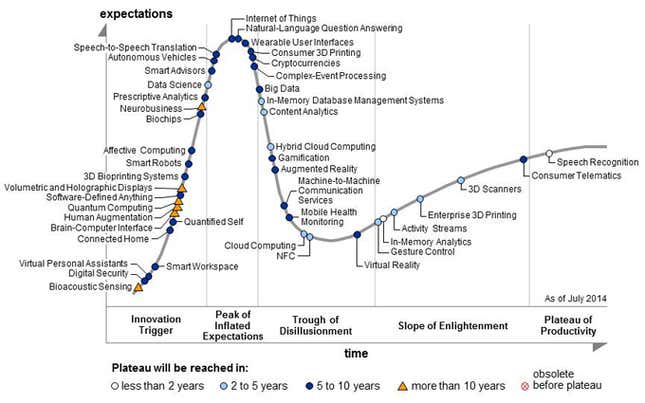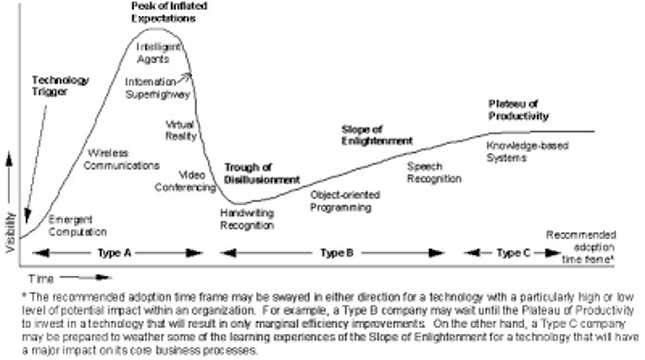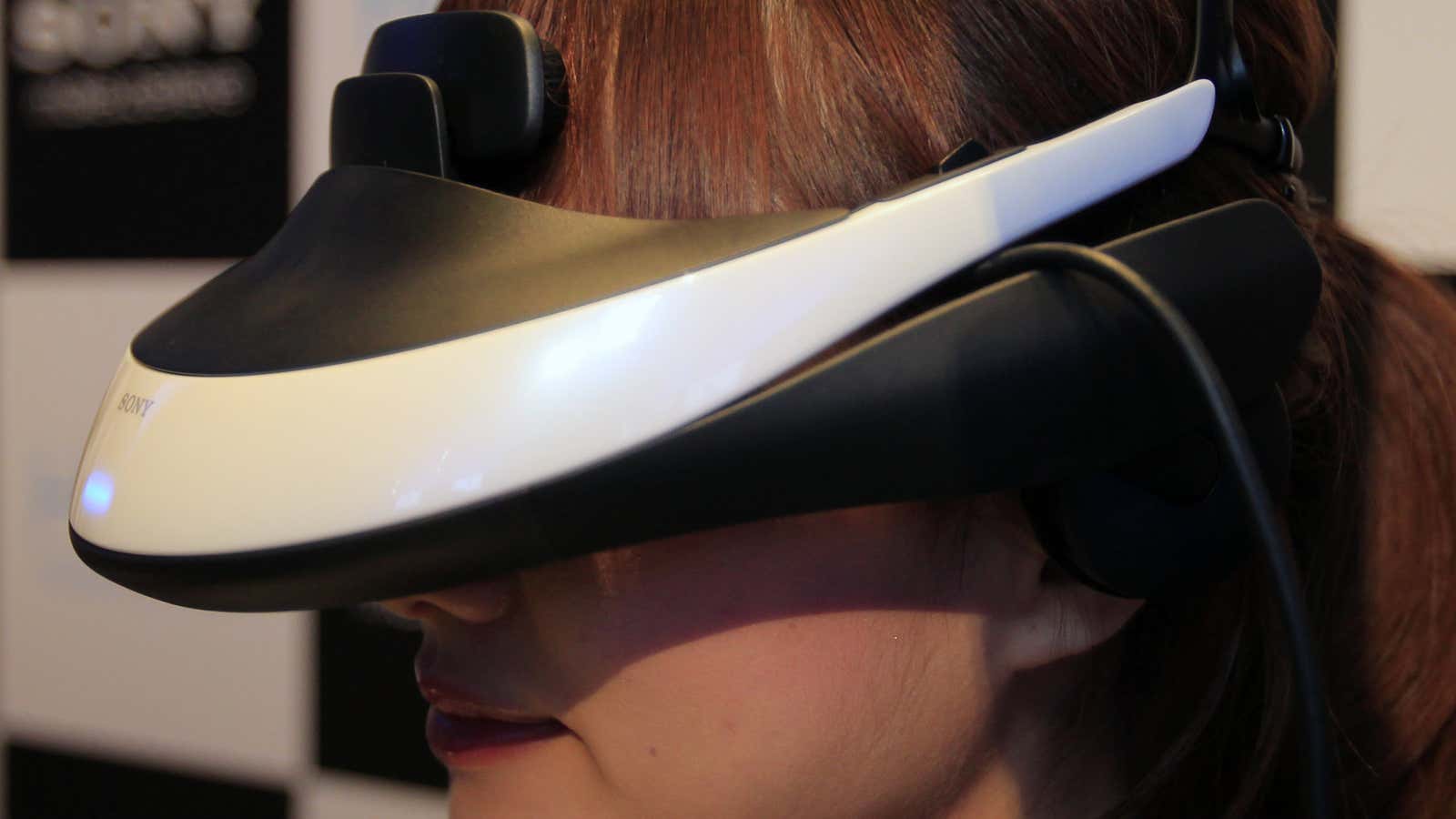It was the smart cup that did it.
That is, the $100 glass cup that comes embedded with sensors that transmit information to an app that tells you what liquid you’ve just poured into it, along with nutritional information. In June, Quartz called this latest example of the internet of things ”an absurdity—the sort of gizmo that seems technically impressive but will quickly be forgotten.” If the internet of things (in which previously “dumb” objects become interconnected through sensors and software) is to “become a huge commercial and societal success, it will be driven by actual utility and efficiency, and not by high-priced novelty,” wrote Dan Frommer.
Tech hype is not always so easy to spot. That’s why the information technology research firm Gartner releases regular reports charting ”hype cycles.” And the firm’s latest hype cycle report confirms our suspicions about the internet of things. It appears we have reached the zenith of its hype.

This is a familiar trajectory. A new technology, just past its birth and barely an infant, is adjudged the next big thing, inspiring breathless articles in newspapers and websites (including this one). Then, when these still-nascent technologies fail to change the world, we react with bitter disappointment, consigning it to trash heap.
In the current cycle, wearable devices are another technology making their way down the sharply declining slope of expectations, having peaked even before the internet of things, probably because enough people had first-hand experience of things like Fitbit and the Nike FuelBand. Quartz wrote in January that this will be the year the hype dies, and in June about the disappointing nature of today’s wearable technology.
Gartner has been charting these cycles for the past 20 years:

Back in 1995, the information superhighway was on the downward slope of the hype cycle, and video conferencing at its lowest point in the chart of expectations. By the year 2000, digital ink was on the ascendant and the “3D web” (recently given fresh life by Amazon’s Fire Phone) on the decline, and in 2004 personal digital assistants and digital cameras were just becoming useful—until smartphones destroyed them both.
What sometimes rescues technology from the wonderfully named “trough of disillusionment” is the actual technological progress underlying the hype (pdf, p.13). When that technology eventually matures enough—a process that can happen while the hype cycle is in that trough, with its absence of expectations—public perception becomes gradually more positive, on what Gartner calls the “slope of enlightenment.” Some technologies even make it to the “plateau of productivity.”
So, for the next several months, expect to see articles about how the internet of things has failed to live up to expectations, the slow decline of the internet of things, and, finally, “what ever happened to the internet of things?” It is a predictable narrative.
Not all technologies recover, nor do they all take the time to work their way through the cycle. The internet of things will probably become a reality in the form of all kinds of electronically-enabled objects. But by the time it does, it will seem like the most mundane thing in the world.




